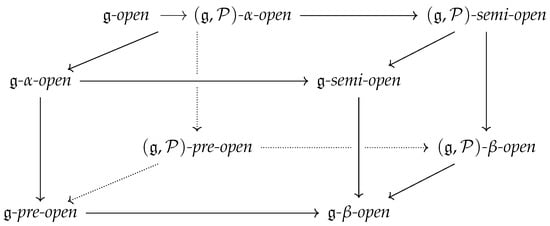Topology and Foundations
A topical collection in Mathematics (ISSN 2227-7390). This collection belongs to the section "B: Geometry and Topology".
Viewed by 14760Editors
Interests: applied mathematics; applied informatics
Special Issues, Collections and Topics in MDPI journals
Interests: mathematics in natural science; computational
Special Issues, Collections and Topics in MDPI journals
Topical Collection Information
Dear Colleagues,
A foundational example in topology leading to graph theory as a new branch of mathematics is when Leonhard Euler demonstrated that it was impossible to find a route through the town of Königsberg (now Kaliningrad) that would cross each of its seven bridges exactly once (with the result depending only on connectivity properties—which bridges connect to which islands or riverbanks).
Subjects included in topology are graph theory and algebraic topology. Topology is foundational in number theory, algebraic geometry, category theory and homological algebra, K-theory, group theory and generalizations, topological groups and Lie groups, dynamical systems and ergodic theory, functional analysis, quantum theory, game theory, etc. Topology is in all fields of engineering, physical sciences, life sciences, social sciences, medicine and even arts, economics, finance, and finally mathematics-related sciences: informatics, physics, chemistry and biology.
Foundations extend beyond topology as the basis or groundwork of anything. Foundations are under algebraic geometry, tropical geometry, logic and deductive systems, functions, algebraic topology, homotopy theory, probability theory, stochastic processes, statistics, physics (fluid mechanics, optics, electromagnetic theory, thermodynamics, heat transfer, equilibrium and time-dependent statistical mechanics) and finally quantum information and its processing.
The aim of this Topical Collection is to bring together recent scientific advances, reviews, communications and short notes dealing with topology and foundations.
Prof. Dr. Lorentz Jäntschi
Prof. Dr. Dušanka Janežič
Collection Editors
Manuscript Submission Information
Manuscripts should be submitted online at www.mdpi.com by registering and logging in to this website. Once you are registered, click here to go to the submission form. Manuscripts can be submitted until the deadline. All submissions that pass pre-check are peer-reviewed. Accepted papers will be published continuously in the journal (as soon as accepted) and will be listed together on the collection website. Research articles, review articles as well as short communications are invited. For planned papers, a title and short abstract (about 100 words) can be sent to the Editorial Office for announcement on this website.
Submitted manuscripts should not have been published previously, nor be under consideration for publication elsewhere (except conference proceedings papers). All manuscripts are thoroughly refereed through a single-blind peer-review process. A guide for authors and other relevant information for submission of manuscripts is available on the Instructions for Authors page. Mathematics is an international peer-reviewed open access semimonthly journal published by MDPI.
Please visit the Instructions for Authors page before submitting a manuscript. The Article Processing Charge (APC) for publication in this open access journal is 2600 CHF (Swiss Francs). Submitted papers should be well formatted and use good English. Authors may use MDPI's English editing service prior to publication or during author revisions.









